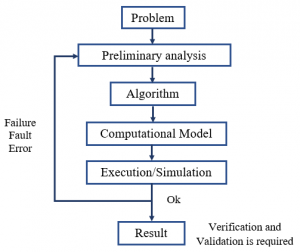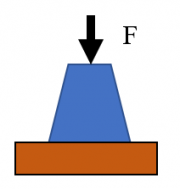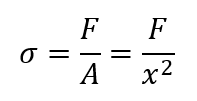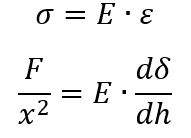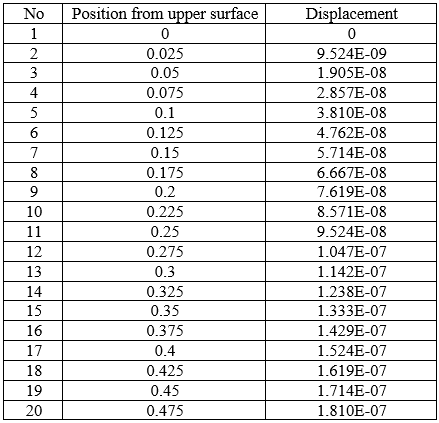Second Class Meeting - Timothy Felix Vickary
RESUME
What we sense with electric pulse in our neural system is associated with all memorized data. One who use perception is the one who think. The act of thinking is the work of comprehending from heart to brain and action. Man who uses his sense is reminded that God's power is infinity. Human is limited with its profanity, therefore we could only use our sense. Mr DAI continues that by having equipped with our knowledge we are being wiser, think before action and consider any consequences. So, we need to study more not for God's purpose as He is the peak of entity but for ourselves.
That relates to, for instance, foundation material of housing. To engineer the foundation we need not only to consider the strength and firmness, but also the age and economic aspects. Engineering Computation is widely utilized to solved such problem and finding the best result integratedly. Although software assist engineers in simulating the system under ideal or near conditional system, engineer decision still comes in the final. Therefore, brainware should dominates, concurrently having collaboration with software to produce optimum result, ultimately a win-win solution for all. Engineers task could be simplify the complicated model to enable software calculate and simulate the model with its limited ability, which help the processing time.
ASSIGNMENT
In the second class of engineering computation, Lecturer mentioned on how modelling works as it has wide appliance in accelerating problem solving which required “computer” help in mathematical processing. Before applying equation, students need a framework from the very beginning after receiving problems until the end of working progress. It is well described in the below flow chart.
The method will then be utilized by student in a given problem which will be carry out and explore further by elaborating equations and performed simulation using EES software in this paper in the form of an assignment to be submitted.
All variables used are liberated to be assumed, such as stress, tension, weight, material properties and soon.
1. Define Problem
Traditional house, House on stilts, is represented on the picture above. To get an easier picture to solve the problem we can disassemble the unity of the house to only the blue rectangular (concrete foundation) in a separated analysis.
F is the force acting on the foundation. Force pushing the foundation toward the ground which act as static wall, meaning it gives reaction, hence foundation remain stable.
2. Preliminary Analysis
From the given problem, we could assume:
- There is no buckling as the concrete is not a long bar.
- The concrete seen from upside is square.
- No torsion, bending, shear stress acting upon the foundation.
- Only axial loading is imposed.
- Each foundation (4 foundations supporting a single house) holds 1000 N.
- Foundation material is homogeneous concrete.
- Top surface length assumed ‘a’ while bottom surface length assumed ‘b’.
- Based on ACI code, for normal-weight concrete the modulus of elasticity is Ec=4700√f'c MPa, by assuming the concrete strength (f’c) is 20 we get Ec = 21 x 10^9 Pa.
Below picture describes a more specific of variables required in analysing strain displacement.
3. Algorithm
To enable the simulation, we need to explore which equation will explain and relates in solving the problem. As the mention above, axial loading or axial force can be defined as:
F meaning force and A which we switch by putting x2 in area correspond to the square area of a section of concrete foundation related to the height (t) from ground level. Therefore, x can be defined as:
The second term of the right side of the equation defines ratio of additional length as x’s length goes downward from length of a to length of b. Furthermore, if discussing stress, strain ε will also be included, which defined as:
dδ defines displacement (objective of the study) from the small fraction of its original length dh. We use the term ‘d’ in front of δ and h is because it follows x incremental growth which we previously split into ‘n’ number. As Hooke’s law defines the correlation between stress, strain, and elasticity, we will take its advantage to initiate the equation for integration.
Switching side then we obtain,
Substituting the x term, we then have
By doing the integration, it will yield
The final equation is going to be used in the computation method.
4. Computation Model
a=0.5 "Length side of upper surface, m"
b=1 "Length side of lower surface, m"
t=0.5 "Foundation height, m"
P=1000 "Foundation imposed force, N"
E=21*10^9 "Modulus of elasticity, Pa, N/m^2"
n=20 "number of splitted foundation"
position[1]=0 "reference from ground"
duplicate i=1,20
position[i+1]=position[i]+0.025 "changes on the 20 investigated displacement position"
displacement[i]=(4*P*position[i])/(E*a*b) "displacement on the investigated position"
end
5. Execution/Simulation
After putting the whole equation and terms in the EES, EES will automatically process and print out the result. Picture below show how the input and output of the given problem.
6. Result
The simulation yields the displacement of concrete based on the investigated position:
